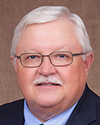
Waves of Change: Vita Plus Dairy Summit Recap
 Critical factors for global protein economics | Dr. Steve Meyer, Kerns and Associates
Critical factors for global protein economics | Dr. Steve Meyer, Kerns and Associates
“Anything that happens in China can dominate everything we do,” said Meyer as he shed some light on global protein markets as well as his analysis of where the U.S. economy is headed.

 Beefing up your dairy herd: Is it a fit for you? | Randy Greenfield and Chad Howlett, Vita Plus
Beefing up your dairy herd: Is it a fit for you? | Randy Greenfield and Chad Howlett, Vita Plus
Incorporating beef semen in a dairy’s reproduction program can hold many benefits, including greater pregnancy rates and farm efficiency, but the resulting crossbred calves carry several unique opportunities and challenges.
 Where’s the (real) beef? | Dr. Frank Mitloehner, University of California-Davis
Where’s the (real) beef? | Dr. Frank Mitloehner, University of California-Davis
An anti-meat movement is percolating in the U.S., but Mitloehner doesn’t foresee fake meat permanently displacing real beef on Americans’ dinner plates any time soon. He shared his insights on the plant-based alternatives movement and the key motivators behind the movement.
 The road map to the 2020 election | David Wasserman, The Cook Political Report
The road map to the 2020 election | David Wasserman, The Cook Political Report
The current political climate in the United States has never been more polarized than it is today, according to Wasserman. He provided his insights into the current political environment and gave his predictions for where he sees the 2020 election is headed.
 Hypocalcemia: A new solution for an age-old problem | Dr. Zach Sawall, Vita Plus
Hypocalcemia: A new solution for an age-old problem | Dr. Zach Sawall, Vita Plus
Hypocalcemia has plagued the dairy industry for years. A product relatively new to the U.S. marketplace may be even more effective as producers work to limit hypocalcemia challenges.
 How seasonal and daily rhythms impact milk production | Dr. Kevin Harvatine, Penn State University
How seasonal and daily rhythms impact milk production | Dr. Kevin Harvatine, Penn State University
It is a natural response for milk production and components to vary based on seasonal changes. Harvatine said understanding these natural variations and how a cow responds to them can help us improve milk production and components.
 True forage quality: Looking through a different lens | Pat Hoffman, Vita Plus
True forage quality: Looking through a different lens | Pat Hoffman, Vita Plus
RFV and RFQ are widely used in the dairy industry to evaluate feed value, but Hoffman said they can be misleading. He explained several better indicators of feed value and provided a new method to evaluate forage quality.
 Un-shrinking feed efficiency to increase dairy margins | Dr. Mike Brouk, Kansas State University
Un-shrinking feed efficiency to increase dairy margins | Dr. Mike Brouk, Kansas State University
Reducing shrink may be the difference between a dairy staying in or going out of business according to Brouk. He shared opportunities to reduce feed cost per hundredweight of milk produced that don’t require changing the ration.

